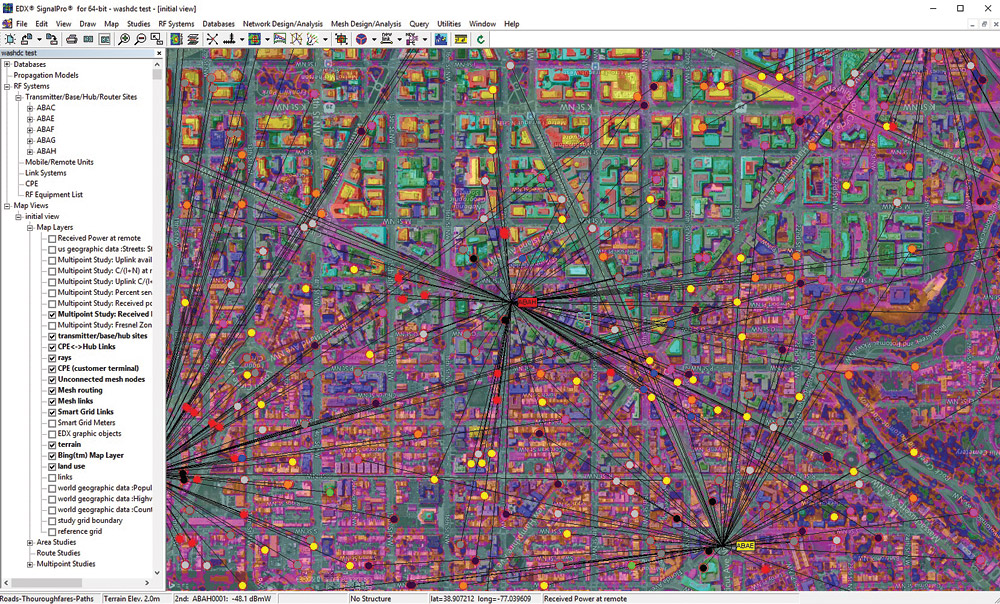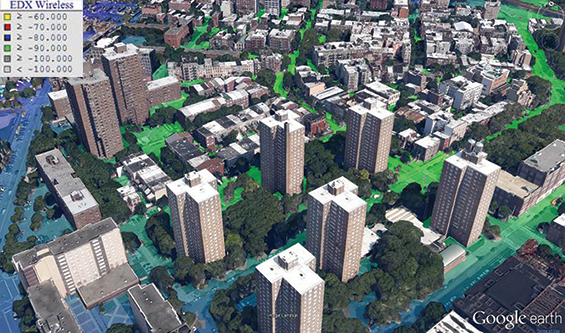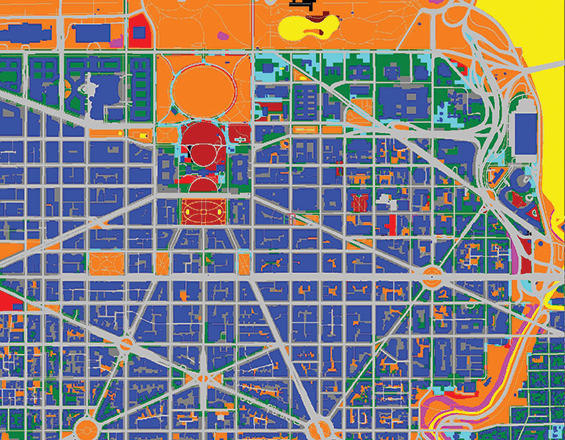By many estimates, there is expected to be 35 billion IoT devices by 2020. So here’s a good question; how much are these deployments going to cost? Of course, an individual business or government agency may be dealing with a small deployment made up of hundreds of devices only covering a small geographic region, but still; the question remains. And unfortunately this can be an overwhelming question even for the small IoT deployments because of the complex nature of these networks. Let’s not forget that we’re talking about networks made up of devices that are always on, always connected and always generating and transmitting vast amounts of data that can that can potentially be made up of any number of devices, technologies and system architectures. Aside from the obvious factors when estimating the cost of an IoT deployment, there are many others to consider. Perhaps many of them are overlooked because in many ways, we’re not used to thinking about them, just as we’re not used to such complex networks. But when we start considering these often overlooked factors, we get a more realistic picture of our network deployment costs.
For enterprise, IoT presents exciting opportunities to streamline operations, lower operating costs, manage fleet and much more. But these enterprises face the challenge of attempting to estimate the cost of IoT deployments while realizing this can vary greatly by the type of devices used and where the system is deployed. Furthermore, the factors that go into deploying an IoT network and the level of analyzation regarding performance, is often times outside the scope of what a business is used to when dealing with their business operations and expenses.
Similarly for vendors, the complex nature of these deployments may well be outside the scope of typical network deployments. One of the main challenges is realizing that each deployment is different from the next and the network design methodology that worked for Customer A may not translate to Customer B.
To be sure, the cost of an IoT deployment is an often discussed topic among enterprise, vendors and everyone in between. However, these conversations often take place under the assumption that the system is fully installed and operating. As such, the planning of IoT networks usually revolves around the data acquisition of system performance and traffic, real time reporting of device behavior, along with maintenance, field technician and battery replacements costs. This is not a completely misguided approach. Obviously all of these factors are vital and will play a huge part in the overall system cost.

Link information from base to fixed subscriber units
(click to enlarge)
But let’s not get ahead of ourselves. Before we have a functioning network, there are many things that can be done pre-deployment to ensure a properly designed system that not only keeps costs down but also performs optimally.
Furthermore, it is worth noting that things like network loading and the traffic patterns seen in the system will have a huge impact on how the system is performing overall. But, these factors would be in addition to architectural limitations should there be any. This is one of the reasons why we must take every step to ensure a robust system design.
Knowing that each IoT network may consist of any number of technologies and hardwares etc, there are still universal considerations to every network before deploying any type of hardware in any system architecture.
Let’s first look at where the network will be deployed. Obviously each geographic region and area that may need to be served by an IoT network will be vastly different. This should be the first consideration when planning a deployment, because the physical characteristics of service areas are at the foundation of how much hardware will need to be employed to ensure coverage. To take into account these physical characteristics, it is beneficial to create a 3D model of the service area which can be done with any number of available database layers. However, given that IoT devices will be at or near ground level, and are greatly affected by buildings, structures, trees and other items at ground level, it becomes imperative to use databases that offer a realistic view of what the environment looks like. In other words, a database must be resolute, accurate and current. There are current and custom wireless network planning databases available that offer many different data layers such as land use, terrain elevation, buildings, land use height and social media data for traffic planning. These databases can be used in sophisticated wireless network planning software that allows you to create 3D models of the environment and then place network devices at various locations in the model to predict system performance.

Area study showing system coverage in EDX SignalPro
Using the information learned from the 3D service area model…when can then begin the process of determining how much hardware will be needed. Let’s say for example we need to install collectors to serve mobile/end-user units. Using the information from the 3D model of the service area, along with a list of pole and/or asset locations, it can be determined how many collectors will need to be deployed in order to serve these mobile units. Obviously, this will help prevent the over-provisioning of a deployment and keep our costs down. This examination of collector locations can include any number of parameters. In addition to the service area database and tower and pole information, we can also include street vector and intersection information, building data, technical specification such as equipment receive sensitivity and maximum distance and more.
Because each piece of hardware will have different specifications and limitations, it is important to consider these in conjunction with the aforementioned service area characteristics. Think of how some hardware with a given set of specifications may perform in a rural area versus an urban area for example.
When used accurately, this information can also be used to get more in-depth with our network deployments. If our hardware contains any capacity constraints for example, this information can be used in conjunction with the physical characteristics of the service area when assessing collector location. For example, if our collectors have a maximum amount of allowable traffic, or if there are throughput limits on links, then we can account for such constraints and either relocate a collector or add another as necessary. These types of calculations will help ensure that we have designed a balanced and scalable system.
As such, these constraints become a vital component of our planning not only for the initial deployment, but also in ensuring optimal data flow. In turn, this keeps maintenance and back-end costs down as well as ensuring that the system is scaleable and will be able to accommodate system expansions and new users.

Clutter Database from EGS Technologies – depicting land use in Chicago
Another way to help ensure a successful deployment plan, perhaps particularly for startups, would be to get some real world measurements of your devices’ behavior in the field. A small test site and pilot system allows for measurements that can be used in deployment models, which can be fine-tuned using this real-world information.
This level of system design is much more effective than ad hoc type estimates followed by costly field measurement, testing and device relocation iterations. Furthermore, a properly designed system will reduce installation time, thereby keeping costs down further.
All of this is not to say that every situation can be planned in advance, nor can any deployment model account for every variable our networks may encounter. Given the complex nature of these networks, coupled with the complex nature of service areas, it is clear that not all conditions that may present themselves can be accounted for. But with planning, we can minimize the risks and keep initial costs as well as post-deployment costs down.
For vendors planning a deployment...it is important to have the right tools at your disposal. This will allow you to keep your costs low, provide lower bids and get more deployment jobs. In addition, this will potentially save back end fees for maintenance and trips to the field.
For businesses looking to deploy an IoT network... it is vital to work with a vendor who has the capability to capture the data analytics measuring system performance. But as demonstrated here, the design of a system starts much before any device is mounted. The modeling of system behavior beforehand will help ensure the system is operating properly and there are no extraneous costs. Imagine for example a system with an uneven traffic flow that is putting too much traffic on one device, thereby draining its battery rapidly and unnecessarily costing more in maintenance fees. It is important to know the right questions when selecting a vendor for your deployments. The issues raised here serve as a good starting place to ensure the vendors you consider are using the proper tools and will provide you with a reliable, redundant, low cost network.
About the Author
 Bob Akins joined EDX Wireless in 2012 and has worked with utilities, smart grid vendors and consultants worldwide as they plan, deploy and optimize AMI, distribution automation, M2M and other wireless networks. In his role, Mr. Akins is active in the support of system integrators as well as in the product development of network planning solutions.
Bob Akins joined EDX Wireless in 2012 and has worked with utilities, smart grid vendors and consultants worldwide as they plan, deploy and optimize AMI, distribution automation, M2M and other wireless networks. In his role, Mr. Akins is active in the support of system integrators as well as in the product development of network planning solutions.








